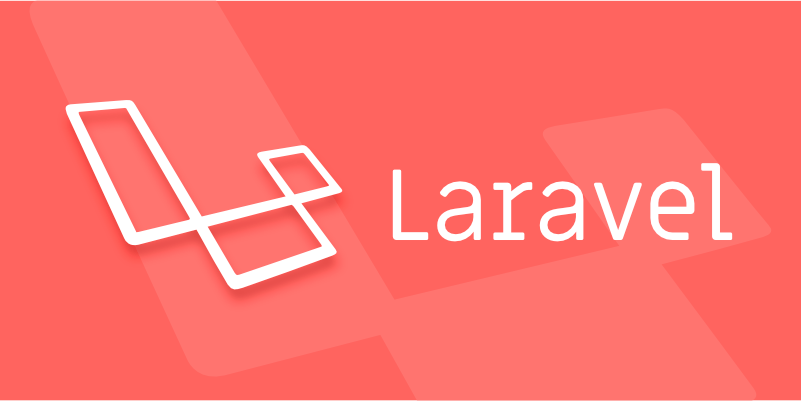You can use macro methods to extend classes that use Macroable features in Laravel. 1. Ensure that the target class (such as Request, Collection) uses Macroable features; 2. Register macros through ClassName::macro('methodName', closure) in boot method of service provider (such as AppServiceProvider); 3. Call custom methods through instances in the application, such as $request->isApiRequest() or $collection->averageStringLength(); 4. Note that macros are globally valid, avoid naming conflicts, and ensure that the logic does not depend on static context unless defined as static macros; this method is a lightweight extension scheme that does not require inheritance or override.

Extending a Laravel class using the macro method is a clean and flexible way to add custom functionality to Laravel's core classes — especially those that use the Macroable trait, like Request , Response , Collection , URL , and others.

Here's how you can do it properly:
? When Can You Use Macros?
You can use macros only on classes that use the Illuminate\Support\Traits\Macroable trait . Most Laravel utility classes do, such as:

-
Illuminate\Support\Collection -
Illuminate\Http\Request -
Illuminate\Http\Response -
Illuminate\Routing\UrlGenerator -
Illuminate\Support\Str
If the class doesn't use Macroable , you can't use macro() .
?? Step-by-Step: Adding a Macro
Let's say you want to add a custom method to the Request class to check if the app is running in API mode based on the route prefix.

1. Register the Macro
You should register macros early in the application lifecycle — the best place is in a service provider .
Create or use an existing service provider (eg, AppServiceProvider ):
// app/Providers/AppServiceProvider.php
use Illuminate\Http\Request;
use Illuminate\Support\ServiceProvider;
class AppServiceProvider extends ServiceProvider
{
public function boot()
{
Request::macro('isApiRequest', function () {
return $this->route()->getPrefix() === 'api';
});
// You can add more macros here
}
}? The
macromethod takes two arguments:
- Name of the method (as a string)
- Closure that will be executed when the method is called
2. Use the Macro in Your Application
Now you can call isApiRequest() on any Request instance:
use Illuminate\Http\Request;
public function handle(Request $request)
{
if ($request->isApiRequest()) {
// Handle API logic
}
}Or in a route:
Route::get('/test', function (Request $request) {
return response()->json(['is_api' => $request->isApiRequest()]);
});? Advanced Example: Extend Collection
Let's add a macro to Collection to calculate average length of strings:
use Illuminate\Support\Collection;
use Illuminate\Support\ServiceProvider;
Collection::macro('averageStringLength', function () {
return $this->avg(function ($string) {
return strlen($string);
});
});Usage:
$collection = collect(['hello', 'world', 'hi']); echo $collection->averageStringLength(); // 3.67
?? Important Notes
- Macros are global — once registered, they're available everywhere.
- Register macros in
boot()of a service provider, notregister(). - Avoid naming conflicts — don't override existing methods unless intended.
- Closures bind to the class instance —
thisinside the closure referers to the object (eg, the Request), so you can access its methods and properties.
? Static Macros (Optional)
You can also add static macros using macro() — the closure will be called statically. Just make sure your logic doesn't rely on instance context.
Request::macro('createTestRequest', function ($uri) {
return Request::create($uri, 'GET');
});Then call:
$request = Request::createTestRequest('/api/users');
? Summary
- Use
ClassName::macro('methodName', function () { ... })to extend Laravel classes. - Only works on classes using the
Macroabletrait. - Register macros in the
boot()method of a service provider. - Great for adding reusable utilities without inheritance or overriding.
Basically, it's a lightweight way to "monkey-patch" Laravel classes — cleanly and safely.
The above is the detailed content of How to extend a Laravel class using the macro method?. For more information, please follow other related articles on the PHP Chinese website!

Hot AI Tools

Undress AI Tool
Undress images for free

Undresser.AI Undress
AI-powered app for creating realistic nude photos

AI Clothes Remover
Online AI tool for removing clothes from photos.

Clothoff.io
AI clothes remover

Video Face Swap
Swap faces in any video effortlessly with our completely free AI face swap tool!

Hot Article

Hot Tools

Notepad++7.3.1
Easy-to-use and free code editor

SublimeText3 Chinese version
Chinese version, very easy to use

Zend Studio 13.0.1
Powerful PHP integrated development environment

Dreamweaver CS6
Visual web development tools

SublimeText3 Mac version
God-level code editing software (SublimeText3)

Hot Topics
 Creating Custom Validation Rules in a Laravel Project
Jul 04, 2025 am 01:03 AM
Creating Custom Validation Rules in a Laravel Project
Jul 04, 2025 am 01:03 AM
There are three ways to add custom validation rules in Laravel: using closures, Rule classes, and form requests. 1. Use closures to be suitable for lightweight verification, such as preventing the user name "admin"; 2. Create Rule classes (such as ValidUsernameRule) to make complex logic clearer and maintainable; 3. Integrate multiple rules in form requests and centrally manage verification logic. At the same time, you can set prompts through custom messages methods or incoming error message arrays to improve flexibility and maintainability.
 Adding multilingual support to a Laravel application
Jul 03, 2025 am 01:17 AM
Adding multilingual support to a Laravel application
Jul 03, 2025 am 01:17 AM
The core methods for Laravel applications to implement multilingual support include: setting language files, dynamic language switching, translation URL routing, and managing translation keys in Blade templates. First, organize the strings of each language in the corresponding folders (such as en, es, fr) in the /resources/lang directory, and define the translation content by returning the associative array; 2. Translate the key value through the \_\_() helper function call, and use App::setLocale() to combine session or routing parameters to realize language switching; 3. For translation URLs, paths can be defined for different languages ??through prefixed routing groups, or route alias in language files dynamically mapped; 4. Keep the translation keys concise and
 Working with pivot tables in Laravel Many-to-Many relationships
Jul 07, 2025 am 01:06 AM
Working with pivot tables in Laravel Many-to-Many relationships
Jul 07, 2025 am 01:06 AM
ToworkeffectivelywithpivottablesinLaravel,firstaccesspivotdatausingwithPivot()orwithTimestamps(),thenupdateentrieswithupdateExistingPivot(),managerelationshipsviadetach()andsync(),andusecustompivotmodelswhenneeded.1.UsewithPivot()toincludespecificcol
 Sending different types of notifications with Laravel
Jul 06, 2025 am 12:52 AM
Sending different types of notifications with Laravel
Jul 06, 2025 am 12:52 AM
Laravelprovidesacleanandflexiblewaytosendnotificationsviamultiplechannelslikeemail,SMS,in-appalerts,andpushnotifications.Youdefinenotificationchannelsinthevia()methodofanotificationclass,andimplementspecificmethodsliketoMail(),toDatabase(),ortoVonage
 Understanding and creating custom Service Providers in Laravel
Jul 03, 2025 am 01:35 AM
Understanding and creating custom Service Providers in Laravel
Jul 03, 2025 am 01:35 AM
ServiceProvider is the core mechanism used in the Laravel framework for registering services and initializing logic. You can create a custom ServiceProvider through the Artisan command; 1. The register method is used to bind services, register singletons, set aliases, etc., and other services that have not yet been loaded cannot be called; 2. The boot method runs after all services are registered and is used to register event listeners, view synthesizers, middleware and other logic that depends on other services; common uses include binding interfaces and implementations, registering Facades, loading configurations, registering command-line instructions and view components; it is recommended to centralize relevant bindings to a ServiceProvider to manage, and pay attention to registration
 Understanding Dependency Injection in Laravel?
Jul 05, 2025 am 02:01 AM
Understanding Dependency Injection in Laravel?
Jul 05, 2025 am 02:01 AM
Dependency injection automatically handles class dependencies through service containers in Laravel without manual new objects. Its core is constructor injection and method injection, such as automatically passing in the Request instance in the controller. Laravel parses dependencies through type prompts and recursively creates the required objects. The binding interface and implementation can be used by the service provider to use the bind method, or singleton to bind a singleton. When using it, you need to ensure type prompts, avoid constructor complications, use context bindings with caution, and understand automatic parsing rules. Mastering these can improve code flexibility and maintenance.
 Strategies for optimizing Laravel application performance
Jul 09, 2025 am 03:00 AM
Strategies for optimizing Laravel application performance
Jul 09, 2025 am 03:00 AM
Laravel performance optimization can improve application efficiency through four core directions. 1. Use the cache mechanism to reduce duplicate queries, store infrequently changing data through Cache::remember() and other methods to reduce database access frequency; 2. Optimize database from the model to query statements, avoid N 1 queries, specifying field queries, adding indexes, paging processing and reading and writing separation, and reduce bottlenecks; 3. Use time-consuming operations such as email sending and file exporting to queue asynchronous processing, use Supervisor to manage workers and set up retry mechanisms; 4. Use middleware and service providers reasonably to avoid complex logic and unnecessary initialization code, and delay loading of services to improve startup efficiency.
 Handling exceptions and logging errors in a Laravel application
Jul 02, 2025 pm 03:24 PM
Handling exceptions and logging errors in a Laravel application
Jul 02, 2025 pm 03:24 PM
The core methods for handling exceptions and recording errors in Laravel applications include: 1. Use the App\Exceptions\Handler class to centrally manage unhandled exceptions, and record or notify exception information through the report() method, such as sending Slack notifications; 2. Use Monolog to configure the log system, set the log level and output method in config/logging.php, and enable error and above level logs in production environment. At the same time, detailed exception information can be manually recorded in report() in combination with the context; 3. Customize the render() method to return a unified JSON format error response, improving the collaboration efficiency of the front and back end of the API. These steps are






